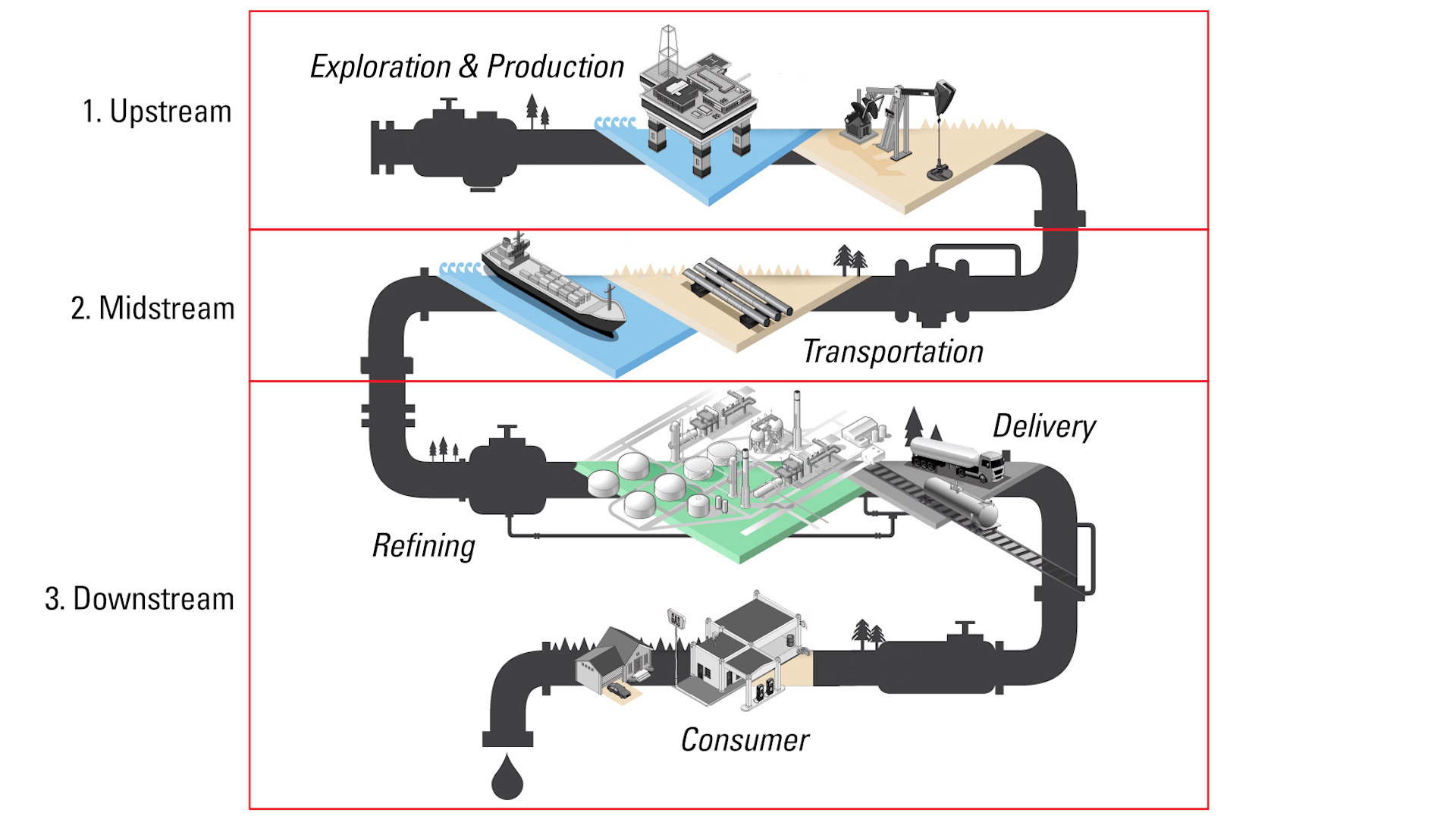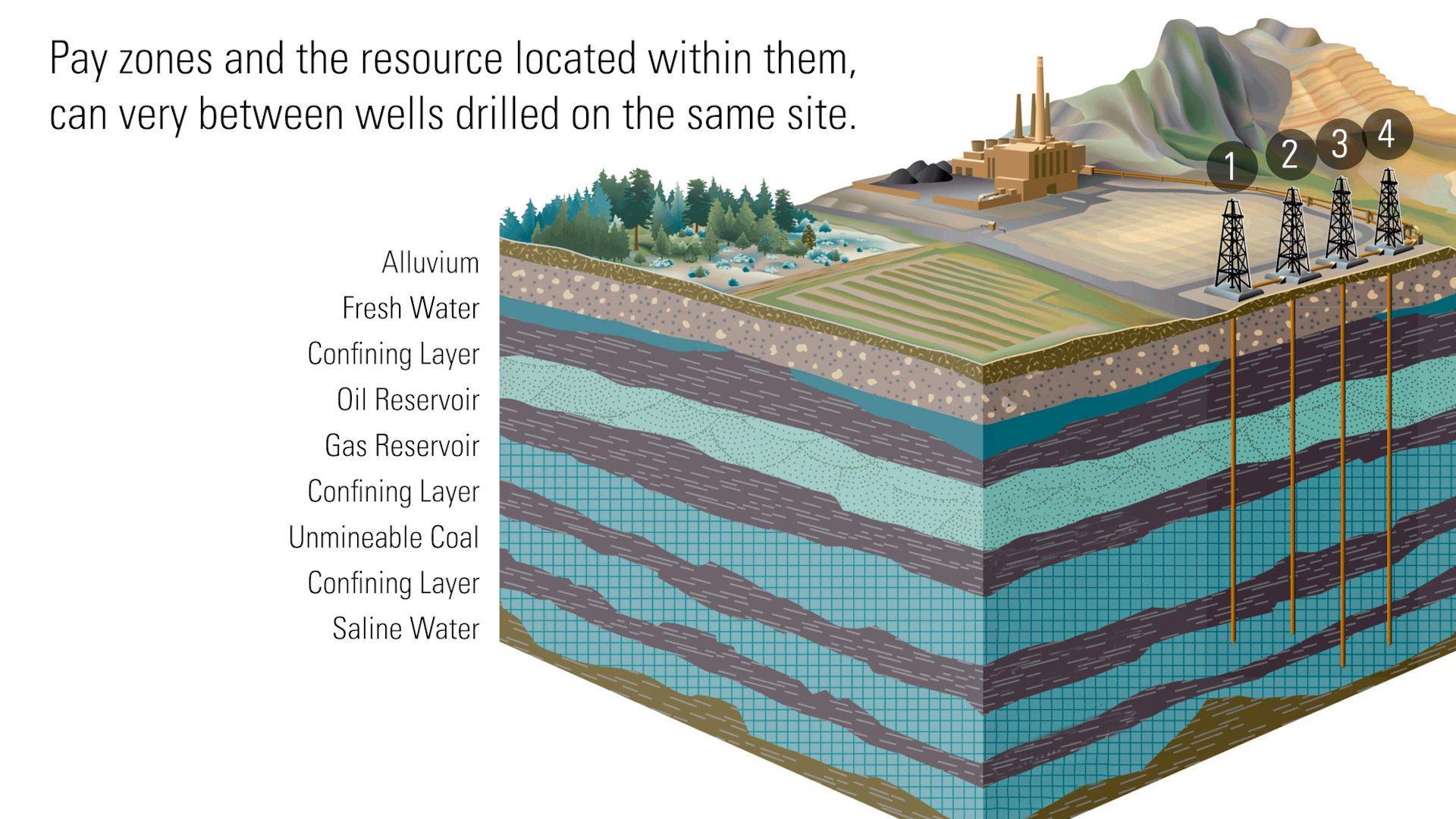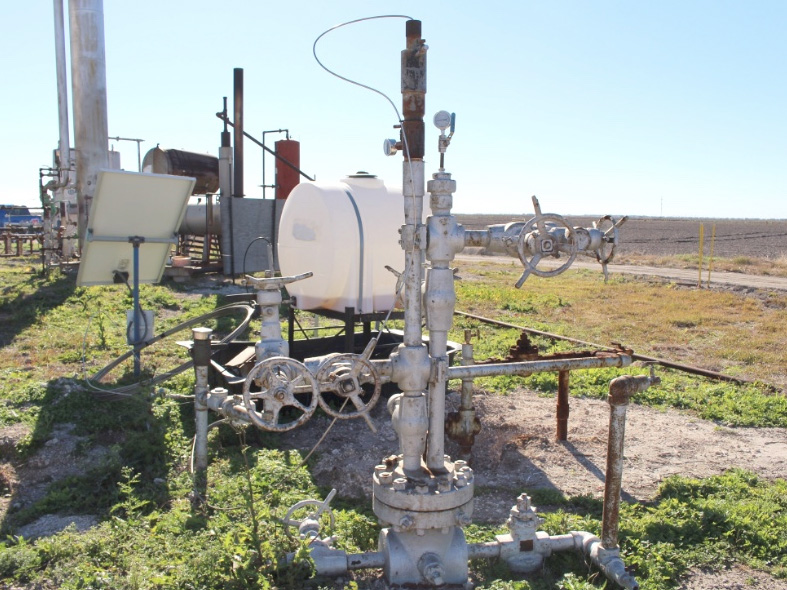Many people picture Texas when they think of crude oil production, but the first breakthrough in this fossil fuel came 1500 miles to the northeast.
History of the Oil & Gas Industry

In 1858, a Dartmouth academic named George Bissel was traveling through rural Pennsylvania when he noticed some locals skimming a dark liquid off the top of a creek.
Bissel took some of the liquid back to Dartmouth and ran tests that showed its potential as a source of fuel.
Bissel saw opportunity. He contacted a local retired railroad conductor, handyman, and jack-of-all-trades named Edwin Drake. The two formed an unlikely partnership around a radical idea: they wanted to drill for oil just like people drilled for water.
After the team secured financing from a banker named James Townsend, Drake set out for the small town of Titusville, Pennsylvania, to go wildcatting.
On Sunday, August 28, 1859 Drake’s driller, William “Uncle Billy” Smith, came out to peer into the well, and saw dark fluid floating on top of the water.
On Monday, when Drake arrived, he found Uncle Billy and his crew standing guard over tubs, washbasins, and barrels filled with oil.
Drake attached a hand pump and began to do exactly what he and Bissel had dreamed about: pump a fuel source up from underground. By the end of 1859, wells had sprung up throughout the new oil country.
3 Sectors of the Oil & Gas Industry

The three primary sectors of oil and gas industry are Upstream, Midstream, and Downstream.
1. Upstream
upstream companies find and produce crude oil and natural gas. The upstream is sometimes known as the exploration and production sector, or E&P. Today, there are several ways that E&P companies artificially lift the resources to the surface.
2. Midstream
Midstream companies are the vital link between the far-flung petroleum producing areas and the population centers where most consumers are located. The midstream industry processes, stores, markets and transports commodities such as crude oil, natural gas, and natural gas liquids, or NGLs.
3. Downstream
the downstream industry includes oil refineries, petrochemical plants, petroleum products, retail outlets, and natural gas distribution companies.
4 Types of Oil & Gas Reservoirs

Not all formations are created equal. Pay zones and the resource located within them can vary between wells drilled on the same site.
The market value of the resource found in these formations will dictate to the producer if they are worth exploring and producing.
Here are the four types of produced reservoirs in the United States:
- Oil Reservoir—these wells are mostly crude oil with some water and gas.
- Volatile Oil Reservoir—these wells begin producing crude oil but over time turn into gas wells after the majority of the oil is recovered.
- Dry Gas Reservoir—these wells produce mostly natural gas along with some water vapor.
- Gas Condensate Reservoir—these wells are full of heavy hydrocarbons that turn into natural gas liquid (NGLs) once brought to the surface.
4 Geological Oil and Gas Traps

This illustration shows us just a sample of the most popular wells being drilled today. Not all well types exist in every production play.
- Conventional Gas: Natural gas produced from reservoirs using traditional drilling, pumping and compression techniques.
- Shale Gas: Natural gas found trapped within shale formations. The shale needs to be fractured in order to produce the gas
- Coalbed Methane: Natural gas extracted from coal beds or coal seams. The term refers to the methane that’s adsorbed into the coal.
- Tight Gas: Natural gas produced from reservoir rocks with such low permeability that massive hydraulic fracturing is necessary to produce the well at economic rates.
Artificial Lift

When the natural pressure of a reservoir is no longer strong enough to push the oil to the surface, producers use artificial lift to recover more production.
In this illustration, the producer is using the oldest and most common form: Rod Lift. In rod lift, a pump jack uses sucker rod string and pump to pressurize the well downhole and bring resources up to the surface piping and equipment.
Dual Completed Wells

This wellhead is on a dual completed well. In this type of operation, two separate formations are being produced up through the same wellbore and are being controlled at the same wellhead.
This well is in South Texas, and the same type of well can be found throughout Mid-Continent production fields.








































